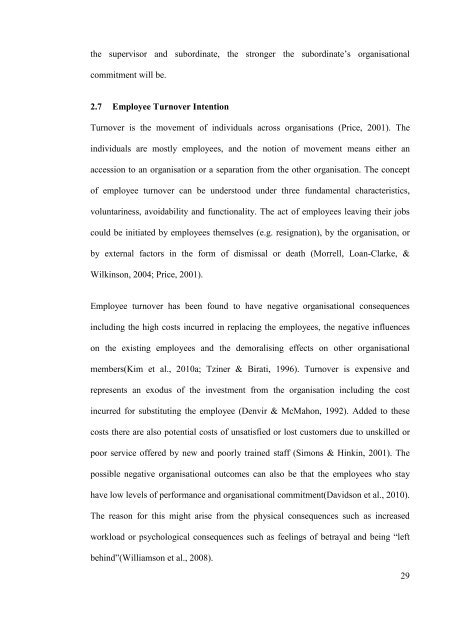View/Open
View/Open
View/Open
You also want an ePaper? Increase the reach of your titles
YUMPU automatically turns print PDFs into web optimized ePapers that Google loves.
the supervisor and subordinate, the stronger the subordinate’s organisational<br />
commitment will be.<br />
2.7 Employee Turnover Intention<br />
Turnover is the movement of individuals across organisations (Price, 2001). The<br />
individuals are mostly employees, and the notion of movement means either an<br />
accession to an organisation or a separation from the other organisation. The concept<br />
of employee turnover can be understood under three fundamental characteristics,<br />
voluntariness, avoidability and functionality. The act of employees leaving their jobs<br />
could be initiated by employees themselves (e.g. resignation), by the organisation, or<br />
by external factors in the form of dismissal or death (Morrell, Loan-Clarke, &<br />
Wilkinson, 2004; Price, 2001).<br />
Employee turnover has been found to have negative organisational consequences<br />
including the high costs incurred in replacing the employees, the negative influences<br />
on the existing employees and the demoralising effects on other organisational<br />
members(Kim et al., 2010a; Tziner & Birati, 1996). Turnover is expensive and<br />
represents an exodus of the investment from the organisation including the cost<br />
incurred for substituting the employee (Denvir & McMahon, 1992). Added to these<br />
costs there are also potential costs of unsatisfied or lost customers due to unskilled or<br />
poor service offered by new and poorly trained staff (Simons & Hinkin, 2001). The<br />
possible negative organisational outcomes can also be that the employees who stay<br />
have low levels of performance and organisational commitment(Davidson et al., 2010).<br />
The reason for this might arise from the physical consequences such as increased<br />
workload or psychological consequences such as feelings of betrayal and being “left<br />
behind”(Williamson et al., 2008).<br />
29

















